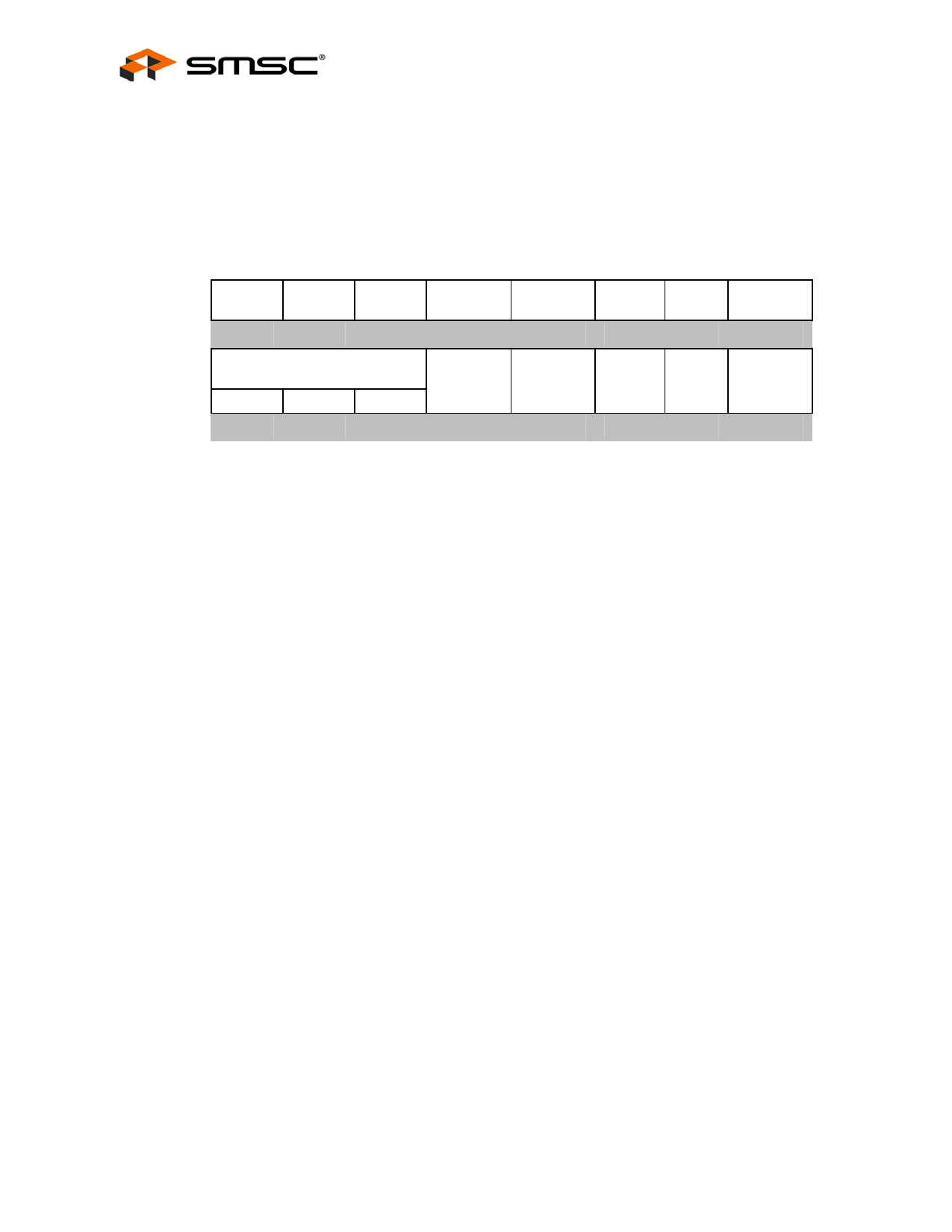LAN91C110 Ver la hoja de datos (PDF) - SMSC -> Microchip
Número de pieza
componentes Descripción
Lista de partido
LAN91C110 Datasheet PDF : 56 Pages
| |||

FEAST Fast Ethernet Controller for PCMCIA and Generic 16-Bit Applications
Datasheet
BANK2
OFFSET
0
NAME
MMU COMMAND REGISTER
TYPE
WRITE ONLY
BUSY Bit Readable
SYMBOL
MMUCR
This register is used by the CPU to control the memory allocation, de-allocation, TX FIFO and RX FIFO control. The three
command bits determine the command issued as described below:
HIGH
BYTE
LOW
BYTE
COMMAND
X
Y
Z
Reserved Reserved
N2
N1 N0/BUSY
0
COMMAND SET:
xyz
000 0) NOOP - NO OPERATION
001 1)
ALLOCATE MEMORY FOR TX - N2, N1, N0 defines the amount of memory requested as (value + 1) * 256
bytes. Namely N2, N1, N0 = 1 will request 2 * 256 = 512 bytes. A shift-based divide by 256 of the packet
length yields the appropriate value to be used as N2, N1, N0. Immediately generates a completion code at
the ALLOCATION RESULT REGISTER. Can optionally generate an interrupt on successful completion. N2,
N1, N0 are ignored by the LAN91C110 but should be implemented in LAN91C110 software drivers for
LAN9000 compatibility.
010 2) RESET MMU TO INITIAL STATE - Frees all memory allocations, clears relevant interrupts, resets packet
FIFO pointers.
011 3)
REMOVE FRAME FROM TOP OF RX FIFO - To be issued after CPU has completed processing of present
receive frame. This command removes the receive packet number from the RX FIFO and brings the next
receive frame (if any) to the RX area (output of RX FIFO).
100 4)
REMOVE AND RELEASE TOP OF RX FIFO - Like 3) but also releases all memory used by the packet
presently at the RX FIFO output. The MMU busy time after issuing REMOVE and RELEASE command
depends on the time when the busy bit is cleared. The time from issuing REMOVE and RELEASE command
on the last receive packet to the time when receive FIFO is empty depends on RX INT bit turning low. An
alternate approach can be checking the read RX FIFO register.
101 5)
RELEASE SPECIFIC PACKET - Frees all pages allocated to the packet specified in the PACKET NUMBER
REGISTER. Should not be used for frames pending transmission. Typically used to remove transmitted
frames, after reading their completion status. Can be used following 3) to release receive packet memory in
a more flexible way than 4).
110 6) ENQUEUE PACKET NUMBER INTO TX FIFO - This is the normal method of transmitting a packet just
loaded into RAM. The packet number to be enqueued is taken from the PACKET NUMBER REGISTER.
111 7) RESET TX FIFOs - This command will reset both TX FIFOs: The TX FIFO holding the packet numbers
awaiting transmission and the TX Completion FIFO. This command provides a mechanism for canceling
packet transmissions, and reordering or bypassing the transmit queue. The RESET TX FIFOs command
should only be used when the transmitter is disabled. Unlike the RESET MMU command, the RESET TX
FIFOs does not release any memory.
SMSC LAN91C110 Rev. B
Page 27
DATASHEET
Revision 1.0 (11-04-08)